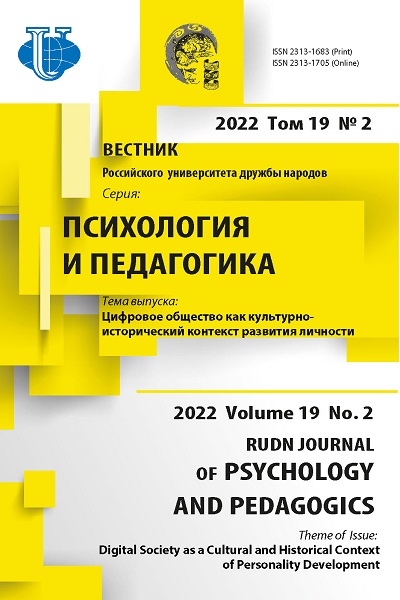Рецензия на книгу: Fourquet Courbet M.-P., Courbet D. Connectés et heureux! Du stress digital au bien-être numérique. Paris: Dunod, 2020
- Авторы: Вельмурадова М.1
-
Учреждения:
- Университет Экс-Марсель
- Выпуск: Том 19, № 2 (2022): Цифровое общество как культурно-исторический контекст развития личности
- Страницы: 406-410
- Раздел: РЕЦЕНЗИИ
- URL: https://journals.rudn.ru/psychology-pedagogics/article/view/31400
- DOI: https://doi.org/10.22363/2313-1683-2022-19-2-406-410
Цитировать
Полный текст
Аннотация
-
Об авторах
Майя Вельмурадова
Университет Экс-Марсель
Автор, ответственный за переписку.
Email: mayavelmuradova@gmail.com
ORCID iD: 0000-0001-7816-5532
доктор информационных и коммуникационных наук, преподаватель коммуникационных исследований, экономики и управления, Технологический институт Inhni South East; исследователь в области коммуникационных исследований, адъюнкт Исследовательского центра IMSIC (Institute Mediterranean des Sciences de l'Information et de la Communication)
Французская Республика, 13001, Марсель, Canebière 83Список литературы
- Fourquet-Courbet, M.P., & Courbet, D. (2020). Connectés et heureux! Du stress digital au bien-être numérique. Paris: Dunod
- Moscovici, S. (1988). Notes towards a description of social representations. European Journal of Social Psychology, 18(3), 211-250
- Perriault, J. (2008). La logique de l’usage, essai sur les machines à communiquer. Paris: L’Harmattan
- Proulx, S., Garcia, J.L., & Heaton, L. (2014). La contribution en ligne: Pratiques participatives à l'ère du capitalisme informationnel. Quebec: PUQ.















